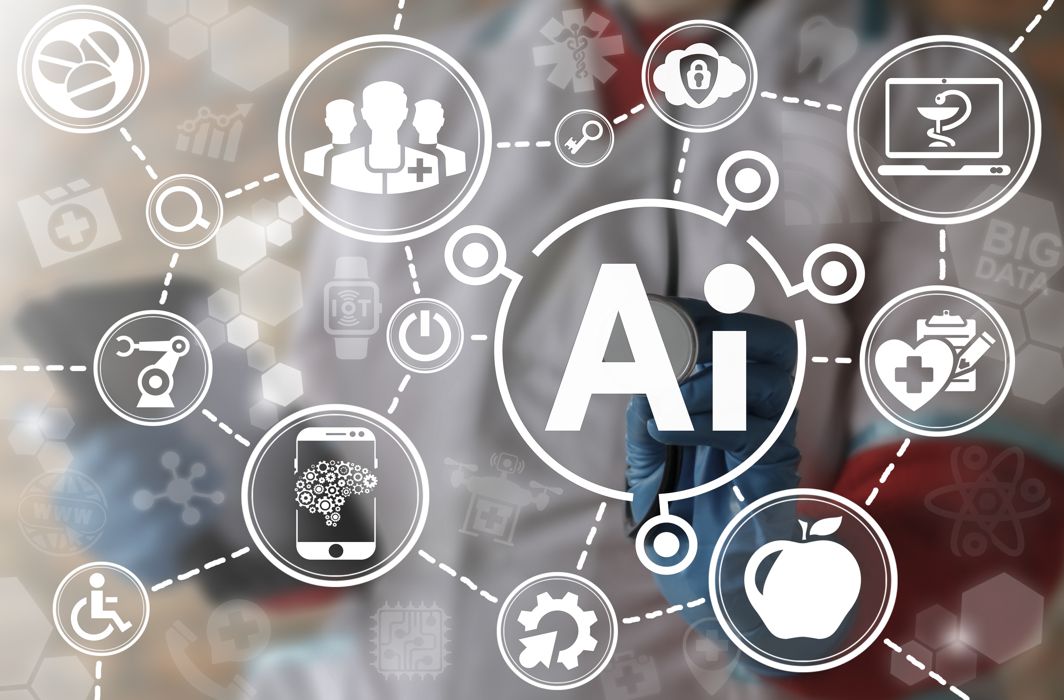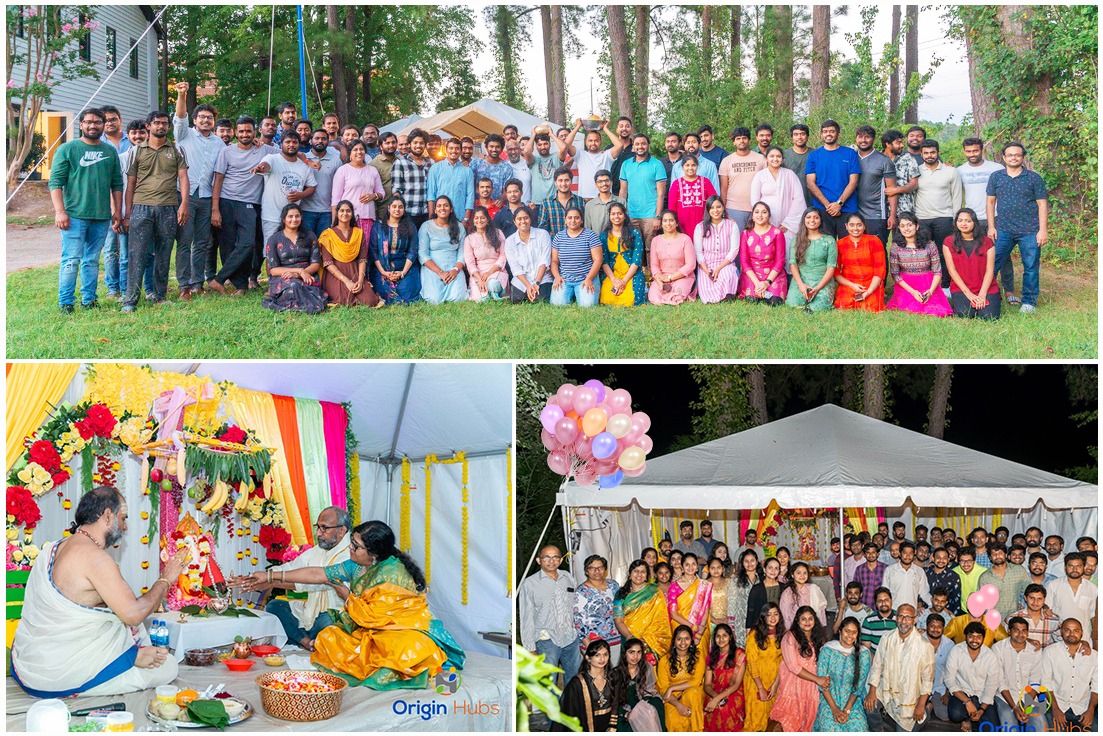Gadgets
To stop a tech apocalypse we need ethics and the arts
Black Mirror projects the negative consequences of social media, while artificial intelligence turns rogue in The 100 and Better Than Us. The potential extinction of the human race is up for grabs in Travellers, and Altered Carbon frets over the separation of human consciousness from the body.

Sara James, La Trobe University and Sarah Midford, La Trobe University
If recent television shows are anything to go by, we’re a little concerned about the consequences of technological development. Dystopian narratives abound.
Black Mirror projects the negative consequences of social media, while artificial intelligence turns rogue in The 100 and Better Than Us. The potential extinction of the human race is up for grabs in Travellers, and Altered Carbon frets over the separation of human consciousness from the body. And Humans and Westworld see trouble ahead for human-android relations.
Narratives like these have a long lineage. Science fiction has been articulating our hopes and fears about technological disruption at least since Mary Shelley’s Frankenstein (1818).
However, as the likes of driverless cars and robot therapists emerge, some previously fictional concerns are no longer imaginative speculation. Instead, they represent real and urgent problems.
What kind of future do we want?
Last year, Australia’s Chief Scientist Alan Finkel suggested that we in Australia should become “human custodians”. This would mean being leaders in technological development, ethics, and human rights.
Finkel isn’t alone in his concern. But it won’t be simple to address these issues in the development of new technology.
Many people in government, industry and universities now argue that including perspectives from the humanities and social sciences will be a key factor.
A recent report from the Australian Council of Learned Academies (ACOLA) brought together experts from scientific and technical fields as well as the humanities, arts and social sciences to examine key issues arising from artificial intelligence.
According to the chair of the ACOLA board, Hugh Bradlow, the report aims to ensure that “the well-being of society” is placed “at the centre of any development.”
Human-centred AI
A similar vision drives Stanford University’s Institute for Human-Centered Artificial Intelligence. The institute brings together researchers from the humanities, education, law, medicine, business and STEM to study and develop “human-centred” AI technologies. The idea underpinning their work is that “AI should be collaborative, augmentative and enhancing to human productivity and quality of life”.
Meanwhile, across the Atlantic, the Future of Humanity Institute at the University of Oxford similarly investigates “big-picture questions” to ensure “a long and flourishing future for humanity”.
The centre is set to double in size in the next year thanks to a £13.3 million (A$25 million) contribution from the Open Philanthropy Project. The founder of the institute, philosopher Nick Bostrom, said:
There is a long-distance race on between humanity’s technological capability, which is like a stallion galloping across the fields, and humanity’s wisdom, which is more like a foal on unsteady legs.
What to build and why
The IT sector is also wrestling with the ethical issues raised by rapid technological advancement. Microsoft’s Brad Smith and Harry Shum wrote in their 2018 book The Future Computed that one of their “most important conclusions” was that the humanities and social sciences have a crucial role to play in confronting the challenges raised by AI:
Languages, art, history, economics, ethics, philosophy, psychology and human development courses can teach critical, philosophical and ethics-based skills that will be instrumental in the development and management of AI solutions.
Hiring practices in tech companies are already shifting. In a TED talk on “Why tech needs the humanities”, Eric Berridge – chief executive of the IBM-owned tech consulting firm Bluewolf – explains why his company increasingly hires humanities graduates.
While the sciences teach us how to build things, it’s the humanities that teach us what to build and why to build them.
Only 100 of Bluewolf’s 1,000 employees have degrees in computer science and engineering. Even the Chief Technology Officer is an English major.
Education for a brighter future
Similarly, Matt Reaney, the chief executive and founder of Big Cloud – a recruitment company that specialises in data science, machine learning and AI employment – has argued that technology needs more people with humanities training.
[The humanities] give context to the world we operate in day to day. Critical thinking skills, deeper understanding of the world around us, philosophy, ethics, communication, and creativity offer different approaches to problems posed by technology.
Reaney proposes a “more blended approach” to higher education, offering degrees that combine the arts and STEM.
Another advocate of the interdisciplinary approach is Joseph Aoun, President of Northeastern University in Boston. He has argued that in the age of AI, higher education should be focusing on what he calls “humanics”, equipping graduates with three key literacies: technological literacy, data literacy and human literacy.

“Robots” by Kollage Kid is licensed under CC BY-NC-SA 2.0
The time has come to answer the call for humanities graduates capable of crossing over into the world of technology so that our human future can be as bright as possible.
Without training in ethics, human rights and social justice, the people who develop the technologies that will shape our future could make poor decisions. And that future might turn out to be one of the calamities we have already seen on screen.![]()
Sara James, Senior Lecturer, Sociology, La Trobe University and Sarah Midford, Senior Lecturer, Classics and Ancient History and Director of Teaching and Learning (ugrad), School of Humanities and Social Sciences, La Trobe University
This article is republished from The Conversation under a Creative Commons license. Read the original article.
Gadgets
WhatsApp to introduce Native File Sharing feature similar to Apple’s AirDrop
Users can choose to be visible to others without disclosing their phone numbers to people who are not their contacts.

A Meta-owned messaging platform, WhatsApp is all set to introduce a new feature that allows Android users to share files with another user nearby. According to reports, the feature will be developed similar to Apple’s AirDrop.
The file sharing feature nearby is not currently available for beta testers. However, according to a report from WhatsApp feature tracker WABetaInfo, it seems that the feature will soon be introduced. The report reveals a screenshot that shows an option within the app stating, to share files with people nearby, along with a list of nearby users.
It is interesting to note that users can choose to be visible to others without disclosing their phone numbers to people who are not their contacts. In order to share files with other users, one needs to wait for nearby users to accept their request. The process involves a unique interaction, where nearby users can shake their device to receive incoming share requests. It is important to note that this feature is designed with end-to-end encryption to ensure user privacy.
In the upcoming update, WhatsApp is expected to introduce a nearby file-sharing feature. However, the current beta version for Android, which is 2.24.2.20, has addressed a camera issue. Some Android beta testers have reported difficulties in launching the camera within the app after the 2.24.2.13 update. Upon launching, users were presented with an error message that said, can’t start camera, please restart your device. This issue persisted even after restarting the device or relaunching the app.
The latest beta update of WhatsApp, located at 2.24.2.20, has fixed the camera bug. This allows users to launch the camera within the app and share photos and videos with their contacts without any interruptions. As WhatsApp continues its efforts to improve its features and address bugs, users can expect a better messaging experience on the platform.
Gadgets
Meesho mega blockbuster sale: E-commerce platform to offer 80 percent discount on electronics
The e-commerce platform’s first mega blockbuster sale will sell more than 400 brands directly with the help of authorised partners on its digital store called Meesho Mall.

Ahead of the festive season, e-commerce platform Meesho’s mega blockbuster sale is starting on Friday, October 6, 2023. The platform will provide a massive discount of up to 80 percent on different categories such as essentials, accessories, electronics, footwear, etc.
The blockbuster sale is scheduled to conclude on October 13, 2023. Notably, the Softbank backed e-commerce platform is starting its festive sale a day before Flipkart or Amazon’s festive sale goes live. The e-commerce platform’s first mega blockbuster sale will sell more than 400 brands directly with the help of authorised partners on its digital store called Meesho Mall.
Reportedly, the platform also added over 50 lakh new customers during these sales. More than 75 percent of the demand was received from Tier-II cities, including Amravati, Aurangabad, Dehradun, Nellore, Solapur, and Warangal. The platform further claimed that they have added more than 2 lakh sellers in the past two years.
Recently, Meesho affirmed that they have received over 10 million (approx) from its pre-festive sales during Onam, Raksha Bandhan, and Ganesh Chaturthi. The platform has more than 14 lakh sellers, selling approx 12 crore products in 30 different categories.
In an effort to increase the seller base, the company announced the onboarding of non-GST sellers on the platform earlier this week. The GST council announced to permit the e-commerce platform to onboard sellers with turnover of up to Rs 40 lakh.
Prior to Meesho’s Mega Blockbuster Sale, the company introduced a loyalty programme during which eligible users will earn Smart Coins, which the user can redeem every time they make the purchase of any products on the platform.
As per Redseer, over 140 million shoppers are likely to make purchases during the festive season. This will enhance the Gross Merchandise Value (GMV) of the Indian e-commerce sector by 18 to 20 per cent and may touch Rs 90,000 crore as compared to Rs 76,000 crore last year.
Phones & gadgets
Apple launches iPhone 15 series, India price, features, availability
The iPhone 15 series will be available in India from September 22 but iPhone lovers can also pre-order, starting from September 15 onwards.

Apple launched its most anticipated iPhone 15 series, including the iPhone 15, iPhone 15 Plus, iPhone 15 Pro and iPhone 15 Pro Max during the Wonderlust event globally on September 12 night.
The iPhone 15 series will be available in India from September 22 but iPhone lovers can also pre-order, starting from September 15 onwards.
People can buy a new iPhone 15 or upgrade it to the old one. There are five colours available for the people.
According to reports, Apple has been manufacturing the iPhone 15 series in India and China. Apple has moved 7% of its iPhone production to India. Previously, India was not making the newest models. The Centre’s production-linked incentive (PLI) scheme for smartphones played a part in Apple moving its production to India.
The new iPhone 15 has been launched with the same starting price as its prototype, the iPhone 14. The 128GB variant is priced at Rs 79,900, while the 256GB variant costs Rs 89,900. For people who need more storage, the 512GB variant is available for Rs 1,09,900.
This latest iPhone series puffs a 6.1-inch display and comes in five different colours which are pink, yellow, green, blue, and black. While the design remains the same as the previous models, the iPhone 15 features a dynamic island notch instead of the usual notch, which was highly popular among the iPhone 14 Pro phones.
The camera part of the iPhone series has undergone significant upgrades, the new iPhone 15, with an enhanced 48-megapixel primary sensor replaces the 12-megapixel dual camera system which was available in the previous iPhone 14. This significant improvement promises better low-light photography and portrait shots.
The tech giant announced that the iPhone 15 has an all-day battery life, making it more convenient for users to go about their daily activities without worrying about their phone’s battery.
The iPhone 15 Pro models feature a lighter body and thinner bezels. The new AirPods Pro with USB-C charging case will support Lossless Audio with Apple Vision Pro.
Additionally, the iPhone 15 is powered by Apple’s A16 bionic processor, an upgrade from the A15 bionic chipset used in the previous iPhone 14 and iPhone 14 Plus models. The Pro models had the faster and better A16 chip, but now this feature is available in all iPhone 15 models.
The USB-C port on the standard iPhone 15 and iPhone 15 Plus remain limited to lightning speeds up to 480 Mbps. The iPhone 15 Pro and iPhone 15 Pro Max support USB 3 speeds up to 10 Gbps. People will need to buy a separate 1-meter Thunderbolt 4 Pro cable for Rs 5,724 or Rs 10,701 for the 1.8-meter cable to support faster speeds.
The dynamic island notch feature, which can adjust its size according to notifications, was widely discussed before the launch of the iPhone 15. This unique feature can now be available in all models of the phone.
Another important feature of the iPhone 15 is the shift to the USB Type C charging port. Apple has abandoned the lightning port in favour of the more commonly used USB Type C charging port. This means, there is no longer a need for a special iPhone charging cable to be carried around everywhere you go.
-

 India News9 hours ago
India News9 hours agoLandslide hits Arunachal Pradesh, highway linking Indo-China border affected
-

 Education7 hours ago
Education7 hours agoFarmer’s son Nilkrishna Gajare Nirmalkumar from Maharashtra scores 100 NTA score in IIT-JEE Mains 2024
-

 Entertainment9 hours ago
Entertainment9 hours agoBollywood stars Salman Khan, Alia Bhatt, Rekha, Sonakshi Sinha, Aditi Rao Hydari attend Sanjay Leela Bhansali’s Heeramandi premiere
-

 India News10 hours ago
India News10 hours agoTamannaah Bhatia summoned in illegal IPL streaming app case, to appear before cyber cell on April 29
-

 2024 Lok Sabha Elections8 hours ago
2024 Lok Sabha Elections8 hours agoBihar: Election Commission extends voting timings for 4 Lok Sabha seats due to heatwave
-

 Cricket news10 hours ago
Cricket news10 hours agoIPL 2024: Rishabh Pant, Axar Patel score half centuries as Delhi Capitals beat Gujarat Titans by 4 runs
-

 Cricket news3 hours ago
Cricket news3 hours agoTelugu superstar Mahesh Babu meets SRH captain Pat Cummins, says it is an absolute honour
-

 2024 Lok Sabha Elections8 hours ago
2024 Lok Sabha Elections8 hours agoLok Sabha elections: Samajwadi Party chief Akhilesh Yadav files nomination from Kannauj
















